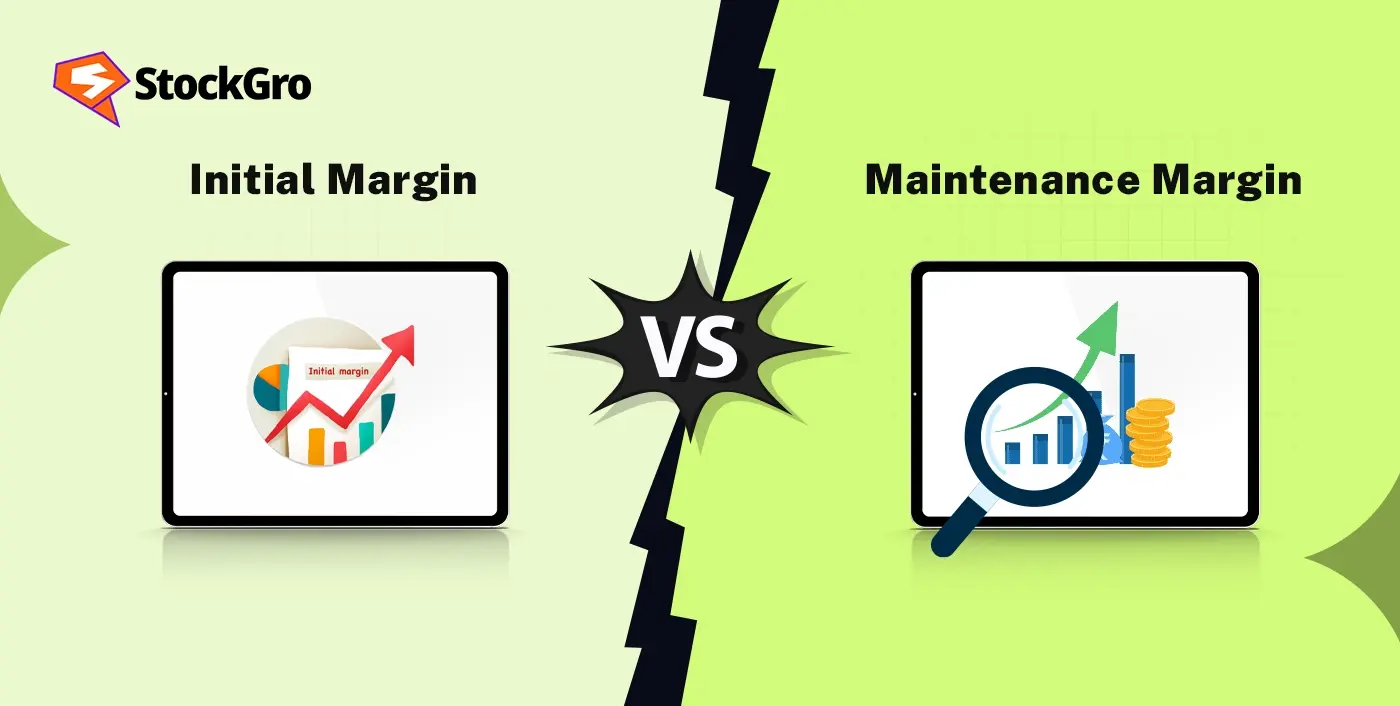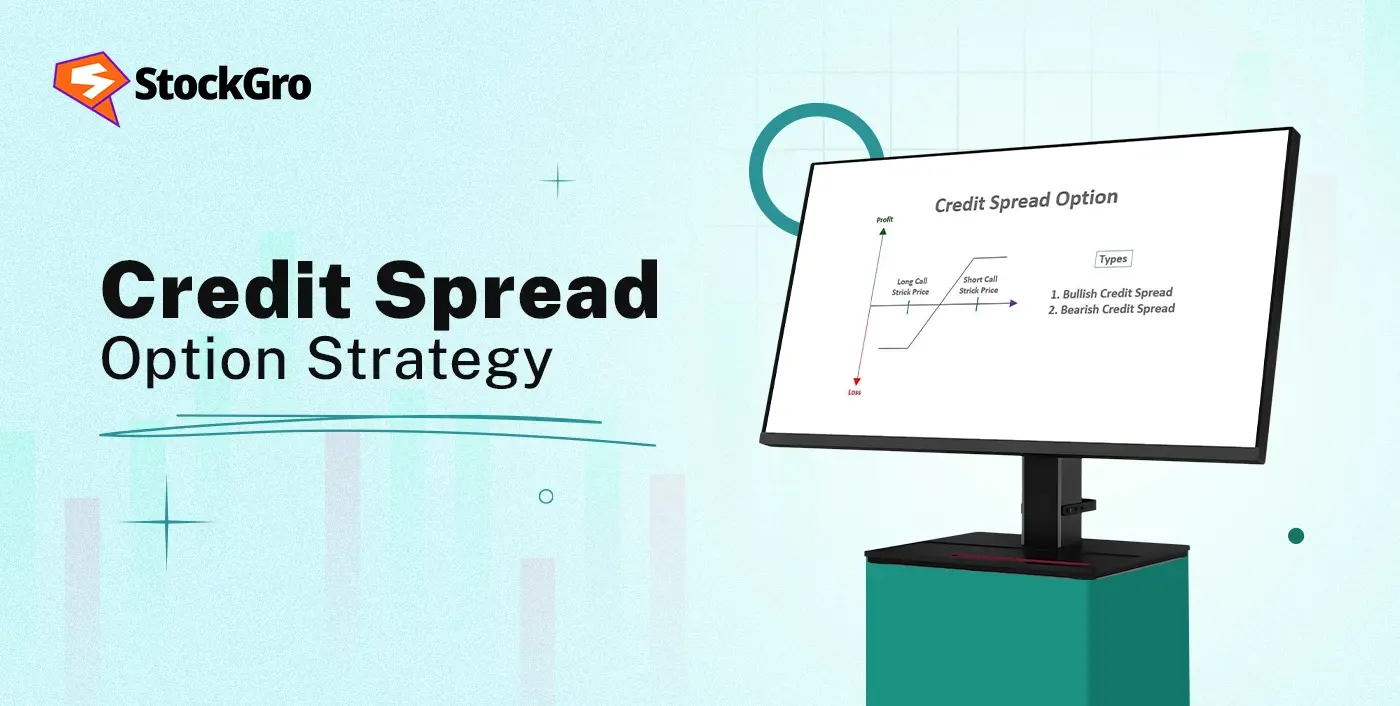
Some traders lose money not because of the market, but because they miscalculate what the market allows them to hold. A small dip in funds, and their position is gone even if the trade was working. The main issue is not knowing the difference between initial margin vs maintenance margin. These two terms decide whether you can enter a trade and whether you can keep it. In this blog, we’ll discuss them in detail, showing how margin rules directly impact your trades.
What Is Initial Margin?
Initial margin represents the minimum funds a trader needs to place in their margin account before opening a futures trade. It acts as a form of security to ensure that obligations can be met if the market moves against the position. The exchange determines the amount, which typically reflects a portion of the contract’s full value. This requirement helps maintain stability in futures markets by reducing counterparty risk.
What Is Maintenance Margin?
Maintenance margin is the minimum balance required in a margin account of the trader after a futures trade has been opened. If the account dips below this threshold due to losses, the trader receives a margin notice and must add extra funds to restore it. The maintenance margin is consistently lower than the initial margin and acts as a continuing protection for both exchanges and traders.
Key Differences Between Initial and Maintenance Margin
When comparing initial margin vs maintenance margin, the difference mainly lies in purpose, timing, and capital requirement. Next, let’s examine how they differ:
| Feature | Initial margin | Maintenance margin |
| Purpose | Required to initiate a new trading position | Needed to keep an existing position active |
| Timing | Paid upfront before trade execution | Monitored continuously after position is live |
| Amount | Higher, exchange-defined capital requirement | Lower, usually a percentage of initial margin |
| Frequency | One-time payment at entry | Ongoing requirement during the trade |
| Adjustment | Changes with market volatility and exchange rules | Can trigger margin calls if balance falls low |
| Consequence | Without it, trade cannot be initiated | Falling below triggers margin call/top-up |
How They Work in Stocks vs Futures/Forex
The initial margin vs maintenance margin differs across asset classes, enforced by SEBI and exchanges like NSE and BSE, as explained below:
Stocks (Equity Cash Segment & Margin Trading Facility – MTF)
- Margins are calculated using Value at Risk (VaR) + Extreme Loss Margin (ELM), ensuring protection against both daily volatility and extreme shocks.
- At least 20% of trade value must be paid upfront as initial margin, as mandated by SEBI.
- A maintenance margin of about 30–40% of the market value is required once broker funding is involved, particularly under MTF.
- Daily mark-to-market (MTM) settlements debit losses, and falling below the maintenance threshold triggers a margin call.
- Brokers often require higher buffers under MTF, such as VaR + 3xELM or more, with dynamic levels to protect against drawdowns.
- Non-compliance leads to forced liquidation of securities without the investor’s prior consent.
Futures (Equity & Currency Derivatives)
- Margins are calculated using SPAN (Standard Portfolio Analysis of Risk) + Exposure Margin, where SPAN runs stress tests across multiple scenarios.
- Maintenance margins in derivative trading usually range from 12.5% to 20% of contract value, depending on volatility and underlying risk.
- Profits and losses are settled daily through MTM; if balances dip below requirements, brokers issue margin calls immediately.
- Failure to restore margins results in automatic squaring off of open positions.
- These strict rules protect exchanges and participants from sudden shocks and counterparty risk in leveraged markets.
Forex (Exchange-Traded INR Currency Pairs)
- Retail clients can only trade regulated INR pairs such as USD/INR, EUR/INR, JPY/INR, and permitted cross pairs, under SEBI and RBI oversight.
- Margin calculation follows the same SPAN + Exposure framework as futures contracts.
- Unlike stocks, there is no separate maintenance margin; traders must always maintain the full initial margin amount.
- All positions are settled through daily MTM, ensuring any fluctuation, profit or loss is accounted for promptly.
- If balances fall short, brokers issue an immediate margin call, and failure to comply can lead to liquidation.
- This tightly controlled structure ensures compliance with FEMA guidelines and prevents excessive risk-taking in the forex segment.
Typical Percentages & Regulatory Defaults
The standard margin requirements in India differ by segment, as follows:
- In the cash segment, the minimum upfront stock margin is 20% of trade value, calculated as Value at Risk (VaR) plus Extreme Loss Margin (ELM). Brokers may demand higher, but there is no separate regulated maintenance margin. Instead, positions are marked to market daily, and any shortfall must be topped up to avoid penalties.
- For intraday equity trades, SEBI now mandates a uniform 20% upfront margin. This caps maximum leverage at 5x, curbing older practices where brokers offered 10x or even 20x leverage. The stricter framework aims to reduce excessive short-term risk-taking in volatile markets.
- Under the Margin Trading Facility (MTF), the initial margin depends on the stock category. F&O-listed stocks follow VaR + 3xELM, while non-F&O stocks require VaR + 5xELM. Many platforms enforce a minimum 25% margin, though this is not regulatory. A maintenance margin arises if equity value falls below thresholds derived from VaR and ELM, not from a fixed percentage.
- As far as futures margin is concerned, initial margin is determined through SPAN plus exposure margins, usually 12.5%–20% of contract value. Daily MTM settlements serve as de facto maintenance margins, where any losses trigger a margin call. Recent SEBI updates also require option buyers to pay 100% of the premium upfront, while sellers face an additional 2% ELM on contracts expiring the same day.
Margin Call Triggers & What Happens
A margin call arises when an investor’s account balance falls below required levels such as maintenance margin, as follows:
- Decline in asset value: A sharp fall in the price of securities bought on margin reduces equity in the account. If losses reduce equity below the maintenance margin, the broker issues a margin notice asking for extra funds or position liquidation.
- Excessive leverage usage: Using borrowed money to take on oversized positions amplifies both gains and losses. A small adverse price move under such conditions can quickly erode equity, triggering a call sooner than expected.
- Increased margin by broker: Brokers may revise margin requirements during volatile markets or for specific assets. This sudden adjustment can leave existing positions underfunded, forcing traders to add capital or reduce exposure.
- Unrealized losses accumulating: Even without closing a position, paper losses impact the equity calculation. Continuous mark-to-market losses reduce available margin until the threshold is breached, leading to a call.
- Failure to act promptly: Once a margin call is issued, traders must either deposit additional funds or sell holdings. Ignoring it results in the broker liquidating positions to restore compliance.
Practical Examples & Calculations
Now let’s take an example to understand how initial margin and maintenance margin are calculated in live trades better. Suppose a trader buys 100 shares of ABC Ltd., currently priced at ₹1,000 per share. The total trade value is ₹1,00,000.
If the broker demands 20% initial margin, the trader deposits 20,000, and the broker covers the remaining 80,000.
If the broker requires a 20% initial margin, the trader must necessarily deposit ₹20,000, while the broker provides the remaining ₹80,000. Assume the maintenance margin is set at 15%.
- If the price drops to ₹950, the position value becomes ₹95,000. The trader’s equity is now ₹95,000 – ₹80,000 = ₹15,000, which equals 15% of the new value, so no margin call is triggered.
- If the price falls further to ₹940, the position value reduces to ₹94,000. Equity is ₹94,000 – ₹80,000 = ₹14,000, which is below the required 15% (₹14,100). A margin call is sent, requiring the trader to add ₹100 or lower holdings.
This shows how even minor price movements can significantly affect margin responsibilities.
Best Practices for Margin Traders
Margin trading requires discipline and awareness of risks, and some best practices are discussed below:
- Always understand margin requirements before entering a trade, as these define the minimum funds needed and prevent unexpected forced liquidations.
- Use margin selectively rather than treating it as extra buying power, focusing only on trades with clear logic and well-defined entry and exit points.
- Keep additional funds in reserve to cover volatility and reduce the chance of triggering a margin call during sudden market swings.
- Monitor positions continuously, since even small market moves can have an amplified effect on leveraged accounts.
- Diversify trades across instruments instead of placing large bets on a single asset, lowering the risk of concentrated losses.
- Reassess exposure frequently and scale back leverage when liquidity is thin or conditions appear unstable.
- Set strict stop-loss levels before taking a trade to manage downside risk, keeping losses controlled.
- Track interest costs and fees associated with margin positions, since they can erode profits if trades remain open too long.
- Avoid emotional trading when using leverage, as impulsive decisions can quickly magnify into larger account damage.
- Treat margin as a tool for strategy execution, not as a shortcut to higher returns, keeping the focus on sustainable growth.
Conclusion
Margins aren’t just numbers on a screen, they’re the pulse of every leveraged trade. They decide who gets to stay in the market when pressure builds and who’s forced out. Understanding initial margin vs maintenance margin as a live checkpoint, not a one-time hurdle, shifts the way traders view risk. It’s this rhythm of constant balance that makes the difference between surviving volatility and getting swept away by it.
FAQs
Initial margin is the upfront amount a trader must deposit to open a position, acting as a security deposit. Maintenance margin is the minimum equity required to keep the position open; if your account falls below this, a margin call may occur, forcing you to add funds or close positions.
Yes, initial and maintenance margins differ between stocks and futures. For stocks, margins are based on value at risk plus extreme loss margin and marked to market daily without a fixed maintenance margin. Futures margins incorporate SPAN and exposure margins, with SEBI regulating higher margin requirements due to leverage and volatility.
In stocks, the initial margin is typically around 20% of the trade value, with brokers sometimes demanding more. For futures, initial margin ranges between 12.5% and 20% of the contract value, varying by asset and market volatility, as set by exchanges and regulators.
Maintenance margin is typically a percentage of the initial margin or contract value, set to ensure traders have enough equity to cover losses. In India, it derives from risk measures like value at risk and extreme loss margin. If your account equity falls below this threshold, a margin call is triggered.
A margin call happens when your account equity drops below the required maintenance margin. This can occur due to adverse price moves or increased margin requirements. You’re then required to deposit additional funds or close positions to restore margin levels and avoid forced liquidation.

